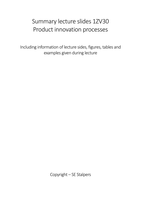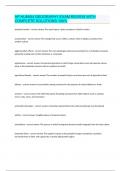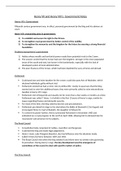Summary
Summary lecture contents 1ZV30 Product Innovation Processes
- Course
- Institution
This document provides a full overview of the contents of 1ZV30 Product Innovation Processes lectures. Including figures and tables and examples given during lecture.
[Show more]





